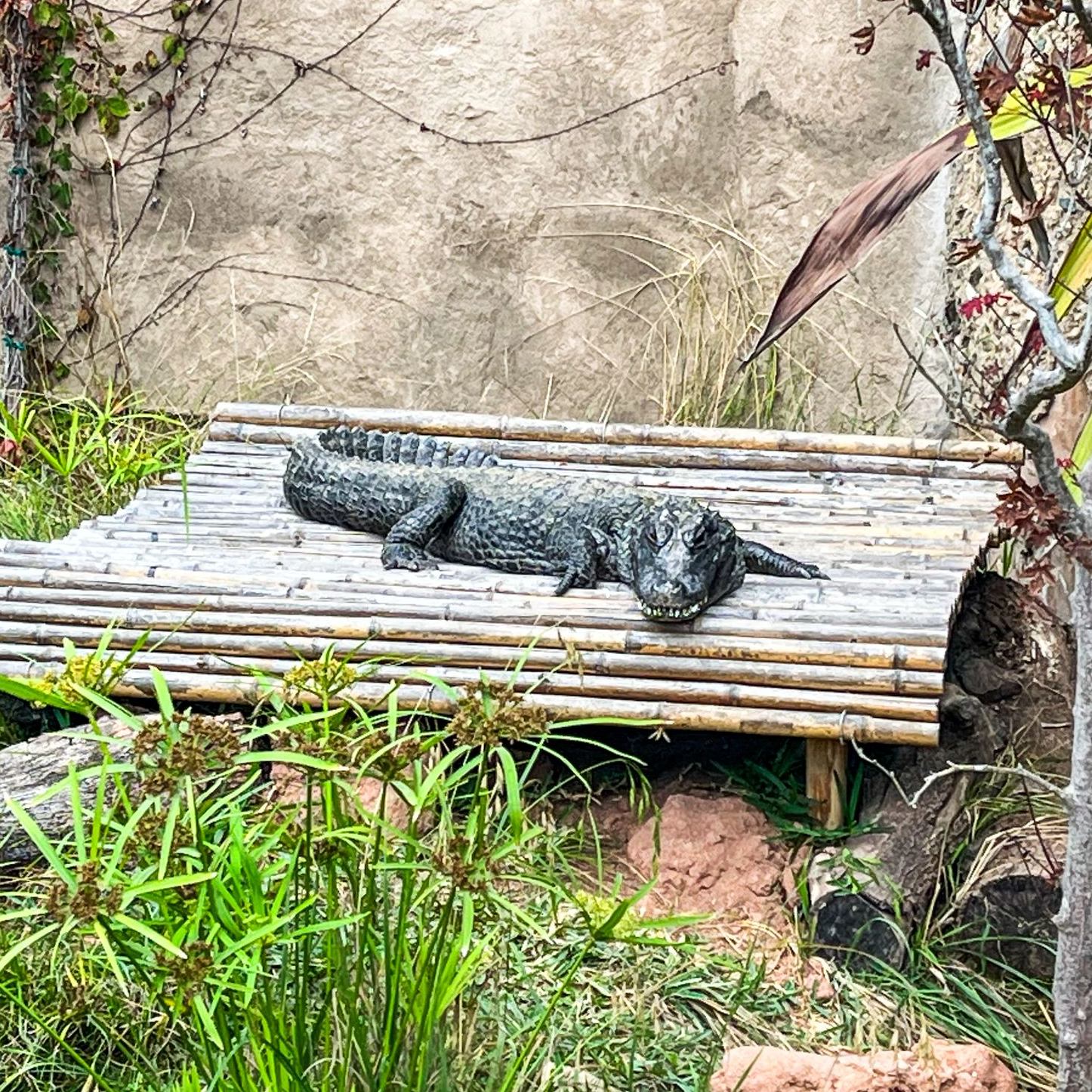- The biology and behavior of ectothermic or cold-blooded animals like alligators
- The significance of sunbathing in regulating alligator body temperature
- The unique characteristics of Xiao the Chinese alligator and her habitat
- The impact of seasonal changes on alligator behavior and habitat requirements
- Conservation efforts and the importance of public awareness in wildlife preservation
Alligators are fascinating creatures that illustrate the intricate relationships between biology, environment, and behavior. As ectothermic animals, they are highly dependent on external conditions to regulate their body temperature, a process vividly demonstrated by the sunning habits of alligators such as Xiao the Chinese alligator. This dependency reflects a fundamental aspect of their survival and daily routines, making their study a worthwhile endeavor for anyone interested in zoology. Understanding these processes is not only key to appreciating these animals but is also vital for effective wildlife conservation.
The concept of ectothermy is vital to understanding alligator behavior. Unlike endothermic animals that generate their own heat, ectotherms, including reptiles like alligators, depend heavily on their surroundings to maintain optimal body functioning. Xiao, an example of a Chinese alligator residing in Santa Barbara, engages in regular sunbathing. These sunning sessions are essential because they help elevate her body temperature, enabling metabolic activities vital for growth and energy. This behavior is a remarkable adaptation that allows alligators to thrive in diverse environments, despite the limitations imposed by their cold-blooded nature.
Sunbathing is a critical activity for alligators and is directly linked to their survival. In colder climates or seasons, this behavior becomes even more pronounced. Sunning helps alligators absorb heat, activating their metabolic processes. This acquired warmth keeps them agile, aiding in hunting and digestion. Additionally, by positioning themselves on logs and rocks, or in Xiao’s case, atop her wooden hut, they maximize sun exposure. This strategy not only aids in thermoregulation but also in conserving energy, crucial given their dependency on external sources for warmth.
Xiao the Chinese alligator displays behaviors and characteristics typical of her species, but she also showcases some unique aspects. Chinese alligators are smaller compared to their American relatives, a feature noted in Xiao’s size and stature. Her habitat in Santa Barbara is equipped to mimic her natural environment in the lower Yangtze River region. This setup is essential to meet her biological needs, offering areas for sunning, swimming, and resting. Moreover, Xiao’s presence in a zoo allows for close observation and study, offering insights into the habits and health of her species, which is critical considering their endangered status.
The changing of seasons plays a significant role in the life of an alligator. With the onset of warmer temperatures and longer days, alligators become more active, seeking sunlit spots to bask and enhancing reproductive activities. Cooler months, however, lead to reduced mobility and increased reliance on burrows or constructed dens for warmth. For Xiao, the predictable weather of Santa Barbara provides stability, yet it is the responsibility of her keepers to simulate seasonal shifts to ensure she experiences the natural cues required for her well-being.
Conservation efforts are crucial in protecting species like Xiao’s Chinese alligator, currently listed as critically endangered due to habitat loss and human activities. Zoos and wildlife reserves play a pivotal role in conservation through breeding programs, education, and public engagement. Educating the public about alligators and their ecological significance fosters a connection between people and wildlife, encouraging support for habitat protection initiatives. Keeper Ryan’s work with Xiao, capturing moments like her sunning behavior, helps inform and inspire visitors, making them more aware of the challenges faced by these incredible animals.
Alligators appeal to many because they reveal the ties between animal biology and environmental conditions. Their dependence on sun exposure to regulate temperature not only highlights their adaptability but also underscores the importance of carefully managed habitats both in the wild and in captivity. Through insights into the life of Xiao the Chinese alligator, we gain a deeper appreciation for these remarkable creatures and the ecological roles they play. Supporting conservation efforts remains essential, as these activities ensure the survival of alligators and other vulnerable species, securing biodiversity for future generations.
*****
Source Description
A sure sign that the seasons have changed! 😎🐊☀️
Alligators, like Xiao the Chinese alligator, are ectothermic or cold-blooded animals. They rely on external heat sources to regulate their body temperature and frequent sunning sessions!
📸: Keeper Ryan
Alt-text: Xiao the Chinese alligator lies on top of her wooden hut to maximize her sun exposure on a beautiful day in Santa Barbara.


